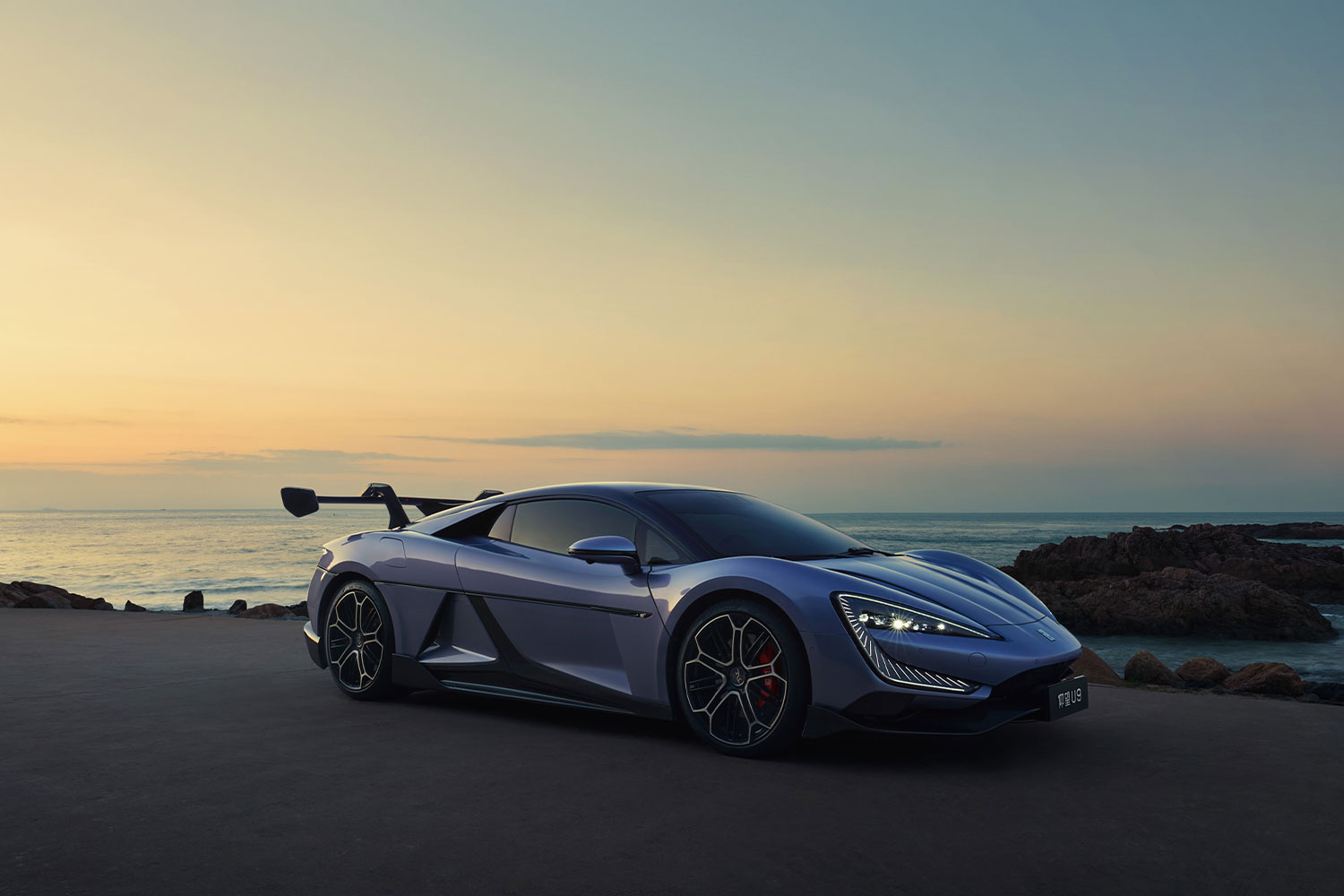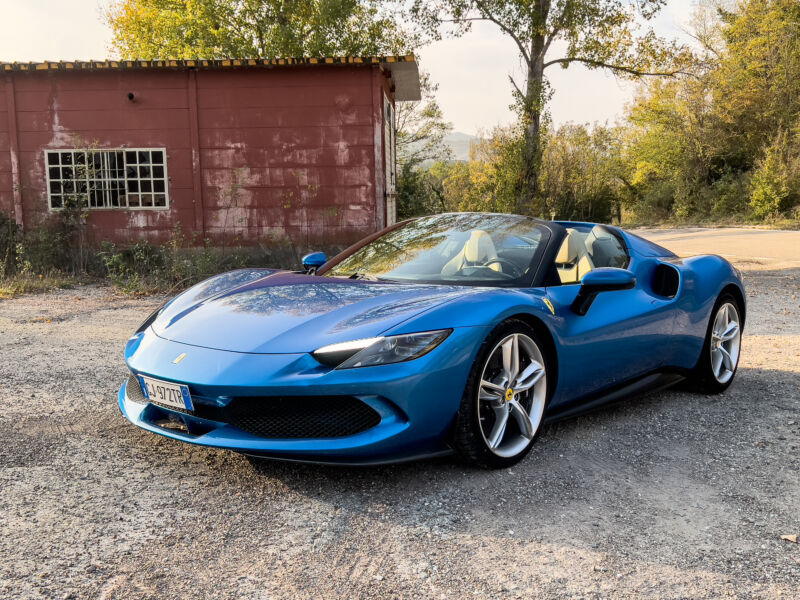-
 chevron_right
chevron_right
309,19 km/h, de 0 à 100 km/h en seulement 2,36s, voici la supercar 100% électrique YANGWANG U9 de BYD !
news.movim.eu / JournalDuGeek · Thursday, 29 February - 10:30

 chevron_right
chevron_right
309,19 km/h, de 0 à 100 km/h en seulement 2,36s, voici la supercar 100% électrique YANGWANG U9 de BYD !
news.movim.eu / JournalDuGeek · Thursday, 29 February - 10:30

 chevron_right
chevron_right
The 2023 Ferrari 296 GTS—we drive Ferrari’s plug-in hybrid convertible
news.movim.eu / ArsTechnica · Friday, 2 December, 2022 - 12:35 · 1 minute

Enlarge / Ferrari has ditched the V8 for its latest mid-engined supercar, the 296 GTS. (credit: Jonathan Gitlin)
Ferrari provided flights from DC to Bologna and back, plus three nights in a hotel, so we could meet the 499P and drive the 296 GTS. Ars does not accept paid editorial content.IMOLA, ITALY—Time is running out for the internal combustion engine. Looming bans on new vehicles powered by internal combustion engines are set to go into effect in the mid-2030s around the world, from California to China, but even now, there are dozens of European cities that have implemented low-emissions zones that restrict passenger cars to hybrids and EVs. And unlike the average CO 2 regulations that govern carmakers, there are no exemptions for building in low volumes.
That means if you build supercars—like, say, Ferrari—and you want to sell your supercars to people who live in the center of cities (which supercar owners often do), it's time to get electrified. That's something Ferrari has been working on for some time, first in Formula 1 and then in its ultra-expensive, ultra-low-volume models like the LaFerrari and SF90. But now, that tech has trickled down to the manufacturer's bread-and-butter model, a mid-engined machine called the 296. During the spring, Ferrari debuted the hardtop 296 GTB. More recently, it took the wraps off the folding-top 296 GTS, tested here.
Visually, it's easy to place this as a mid-engined Ferrari, and were you to line up a 296 alongside an F8, 488 , and 458, the evolution of the shape would be obvious. Then again, there are only so many places you can put a mid-engined car's engine and radiators, and where those go dictates where you need ducts, vents, and so on. However, break out a tape measure and you'll discover the wheelbase has shrunk by a couple of inches (50 mm).
 chevron_right
chevron_right
Why is a small Swedish automaker a decade ahead of the rest of the industry?
news.movim.eu / ArsTechnica · Monday, 19 September, 2022 - 14:57 · 1 minute

Enlarge / Making a success of the supercar game is not easy, but Christian von Koenigsegg's company has survived two decades and continues to develop innovative new technology that's years ahead of the competition. Ars talked to him to find out what he's most proud of. (credit: Franco Gutierrez)
BMW provided flights from DC to San Francisco and back, plus five nights in a hotel so we could attend Monterey Car Week. Ars does not accept paid editorial content.It would be mixing ad campaigns if not metaphors to say that Swedes think differently about design, but I think there’s something to it: Saab was famously left field, even down to where it located the ignition switch; Volvo carefully treads its own path with safety foremost in its mind but with crisp modern design. And then there’s Koenigsegg.
Located at a former Swedish fighter base, this company has been ploughing its own furrow through the automotive superlatives: supercars, hypercars, now megacars. But always in its own way—how else to explain a three-cylinder engine with pneumatic actuators instead of camshafts, a V8 with no flywheel, or a transmission with seven clutches that's both nine-speed automatic but also six-speed manual, with clutch pedal no less?
At this year's Monterey Car Week, few are as close to automotive royalty as the company's eponymous founder, Christian von Koenigsegg. The company's stand at one end of The Quail was among the most mobbed throughout the day, as young TikTokkers in their best suits competed for his attention, or maybe just another look at his latest creation, the CC850. Part 50th birthday present to himself, part celebration of the company entering its third decade, it's a new take on Koenigsegg's first offering, the CC8S.
 chevron_right
chevron_right
Driving McLaren’s new plug-in hybrid supercar, the 2023 Artura
news.movim.eu / ArsTechnica · Tuesday, 14 June, 2022 - 23:01 · 1 minute

Enlarge / You might think this looks like any other McLaren. But the Artura is a clean-sheet design with a new plug-in hybrid EV powertrain. And a total output of 671 hp. (credit: McLaren)
McLaren provided flights from DC to Malaga and back, plus two nights in a hotel, so we could drive the Artura at Ascari Race Resort. Ars does not accept paid editorial content.Since the launch of the McLaren MP4-12C in 2011, all the company's road cars have fundamentally used different variants of the same V8 engine and similar versions of the same carbon fiber monocoque chassis. But 11 years is a long time in the life cycle of an automotive platform, and now the British supercar maker has a shiny new toy called the Artura.
It's a clean-sheet design, powered by a plug-in hybrid EV powertrain with an all-new V6 engine augmented by a hybrid electric motor, with perhaps the best-looking interior of any McLaren to date and a raft of technology upgrades that should improve the experience without compromising driver engagement. And unlike McLaren's last PHEV, the multimillion-dollar P1 , the Artura replaces the brand's previous entry-level supercar, the 570 , so it starts at a (reasonable for a McLaren) $233,000.
Perhaps surprisingly for a company that pioneered the use of carbon fiber chassis in Formula 1 and then again with the F1 road car of 1993, McLaren Automotive has historically contracted the production of its carbon fiber monocoque tubs to an Austrian company called CarboTech. But with the advent of this new platform, called the McLaren Carbon Lightweight Architecture (MCLA), that work is being done in-house at a new facility in Sheffield in northern England.